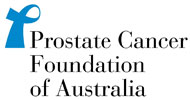PSA Testing for Prostate Cancer - An Update
A guide for GP's written by urologist: Dr Thomas DeanBackground
Prior to the development of the prostate specific antigen (PSA) test in the 1970s only 4% of diagnosed prostate cancers were curable and some 80% of patients had bone metastases. The diagnosis of prostate cancer was effectively a death sentence for these patients with advanced disease. PSA testing resulted in earlier diagnosis and the possibility of curative treatment with surgery and radiotherapy became a reality. However over time the euphoria was tempered by the realisation that biopsies and treatment were associated with the risk of significant side effects, especially as many of these patients had less aggressive cancers that may take decades to cause problems. In addition indolent cancers that will never cause harm may be treated unnecessarily. This led to concern that the risks of PSA testing may outweigh the benefits.
The ongoing controversy
Despite the advances in diagnosis and treatment for prostate cancer the issue of early testing with PSA remains highly controversial. Those who are pro testing will quote studies such as the ERSPC or European Randomised study of Screening for Prostate Cancer which shows a 21-27% reduction in mortality at 13 years in age 55-69. Those with opposing views will counter that the ERSPC data indicates that it is necessary to screen over 700 men to save one life and a large number of men treated by surgery or radiation will suffer severe complications and many would have had cancers that did not need treatment. Incontinence and bowel toxicity impact severely on quality of life at all ages and the impact of sexual dysfunction is a major concern particularly in younger patients. In addition those who oppose early testing can quote studies that conclude that screening does not reduce the death rate. There is no right or wrong in this debate - both sides have accurate data and valid arguments so there is little to be gained from trying to prove that one approach is better than the other. What is not controversial is that about 3400 men will die of prostate cancer in Australia in 2016.
The US Preventive Services Task Force decision May 2012
The USPSTF decision in 2012 to recommend against PSA testing came at a time when over treatment of harmless cancers, particularly with radical surgery was recognised to be causing more harm than benefit. Data from the University of California San Francisco published in 2010 clearly indicated that patients with low risk cancers were being treated inappropriately . Patients with localised prostate cancer were allocated a pre treatment CAPRA risk score (0-10) based on PSA, grade of cancer, clinical stage, percentage of positive biopsies and age. For CAPRA scores 0 1 and 2 (lndicating low risk disease), less than 10% had no treatment and 85-98% of patients were treated with surgery, radiation or cryotherapy, all of which may result in significant complications. . It is no wonder that action to curb overdiagnosis and in turn overtreatment was deemed necessary in the USA. By comparison in Australia there has been a much greater utilisation of active surveillance for low risk cancers. The Victorian cancer outcomes registry for example reported an active surveillance rate of 42% for low risk disease.
How do we solve the dilemma?
The answer is not to abandon PSA testing. Prostate cancer when curable rarely causes symptoms so to detect it when there is a high chance of cure requires early testing. What we need to do is:
- Perform PSA testing for patients at high risk i.e. those with first degree relatives who have been diagnosed with significant prostate cancer prior to age 70 and those who are BRCA 1 or 2 positive (determined by genetic testing for men with a strong family history of breast or ovarian cancer)
- Facilitate the opportunity for all men in good health to be counselled ideally from age 50 regarding the benefits and risks of PSA testing before the test is ordered. In most cases this will be the responsibility of primary care physicians who have in the past been advised “ not to initiate the discussion”. One of the great obstacles is the lack of time available to undertake what can be a very time consuming exercise.
- Use PSA appropriately for risk stratification. Patients with a PSA higher than the median level for age have a higher risk of developing significant cancer in the future and should continue 1-2 yearly PSAs to age 70. Otherwise 5 yearly checks are adequate.
- Improve biopsy safety and effectiveness - pre biopsy MRI reduces the false negative biopsy rate and increases the diagnosis of harmful high risk tumours . Biopsy via the transperineal route virtually abolishes the risk of gram negative sepsis after biopsy and should at the very least be discussed with all high risk patients. These include patients at high risk of multi resistant organisms (those who have in the last 3-6 months travelled to Asia and health care workers) and those with reduced immunity or recent urinary infection.
- Recommend active surveillance rather than treatment where appropriate using MRI (and possibly genomic markers in the future) to make surveillance safer. This will reduce overtreatment of low risk cancer
References on request




